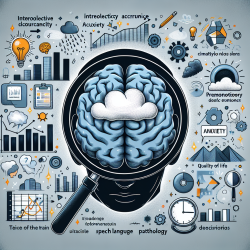In the ever-evolving landscape of special education, staying informed about the latest research and implementing effective strategies is paramount. The recent study titled “Educators apply new teaching strategies despite initial attributions of autistic students’ controllability of their behaviors” by Jonathan Panganiban and Connie Kasari, published in the International Journal of Developmental Disabilities, offers valuable insights for educators working with autistic students.
This study underscores the importance of joint engagement, which involves shared attention and interaction between a child and their social partner. Joint engagement is crucial for the social communication development of autistic students, as it predicts later expressive language skills. The research found that educators’ perceptions of their students' controllability over autism-related behaviors influenced their use of joint engagement strategies.
Here are some key takeaways from the study and practical steps for educators to enhance their teaching practices:
- Understand Controllability: Educators often perceive students with higher cognitive abilities as having more control over their autism-related behaviors. It's essential to recognize that these perceptions can influence teaching strategies. However, effective interventions like JASPER (Joint Attention, Symbolic Play, Engagement, and Regulation) can help educators improve joint engagement strategies regardless of initial perceptions.
- Implement JASPER Strategies: JASPER is a naturalistic developmental behavioral intervention that targets joint engagement, social communication, play, and language development. Educators can incorporate JASPER strategies such as matching the child’s pacing and affect, setting up the environment to facilitate joint engagement, and following the child’s lead during play.
- Focus on Developmental Framework: JASPER training emphasizes understanding child development to individualize targets and goals. This approach helps educators view each student's abilities as malleable and changeable, fostering a supportive learning environment.
- Shift Focus to School-Related Factors: While educators may initially attribute behaviors to student factors, it’s important to consider the impact of school-related factors. Adjusting the classroom environment, peer grouping, and using visual supports can significantly enhance joint engagement and overall learning outcomes.
- Continuous Professional Development: Educators should seek ongoing training and professional development opportunities to stay updated on the latest research and effective teaching strategies. Participating in workshops, webinars, and conferences can provide valuable insights and practical tools for supporting autistic students.
By integrating these research-based strategies into their teaching practices, educators can create a more inclusive and supportive learning environment for autistic students. For a deeper understanding of the study and its findings, educators are encouraged to read the original research paper: Educators apply new teaching strategies despite initial attributions of autistic students’ controllability of their behaviors.










